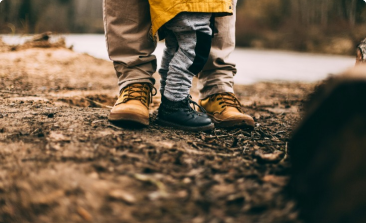Description
Doctors employ specific milestones to determine whether your child is developing as anticipated in order to better understand your 3-year-development. Old Some children acquire abilities earlier or later than others since there is a wide range of what is regarded as standard. Premature toddlers may catch up to milestones later. Always discuss your child’s development with your doctor.
At this age, kids like playing pretend games. But occasionally, their imaginations can take children for a ride and even frighten them. When your child expresses anxiety, pay attention to it and be there to soothe and reaffirm him or her. This article will go over a variety of other 3-year-old developmental areas and milestones.
How much will my 3-year-old grow?
At 3-year-olds, growth is still slow compared to the first year. Most children have slimmed down and lost the round belly of a toddler. While all children can grow at different rates, the following figures give the average for 3-year-old boys and girls:
- Weight: Average gain of about 4 to 6 pounds per year
- Height: average growth of about 2 to 3 inches per year
After the age of 2, children of the same age can vary noticeably in height and weight. Although children come in all shapes and sizes, a healthy toddler should continue to grow at a steady pace. The doctor measures and weighs your child during routine check-ups and records the results on a growth chart. This allows the doctor to track your child’s growth over time and spot any trends that need attention. As long as your child maintains his own growth rate, there is nothing to worry about. If you have any concerns, we recommend that you speak to your child’s paediatrician.
Help children grow
Normal growth – aided by good nutrition, plenty of sleep and regular exercise – is one of the best overall indicators of a child’s health.
Your toddler's appetite can now vary widely, which is common. It’s also common for some toddlers to get stuck on a food item. Food “spikes” don’t usually last longer if you don’t give in to them. Keep offering a variety of nutritious foods and letting your child choose which and how much to eat to build healthy eating habits.
Your child's growth pattern Is largely determined by genetics. Urging children to eat extra food or more than recommended amounts of vitamins, minerals, or other nutrients will not increase their weight. Malnutrition severe enough to impair growth rate is uncommon today in the United States and other developed countries unless a child also has a related chronic disease or disorder.
What can my 3-year-old child do at this age?
As your child grows, you will find new and exciting skills developing. While children can progress at different rates, the following are some of the most common milestones your child may reach in this age group:
- Runs and jumps easily
- Go up the stairs unassisted
- Rides a tricycle
- Washes and dries hands
- Stacks 10 blocks
- Easily draws straight lines and copies a circle
- Can stand on tiptoe
- Use the spoon well and feed yourself
- Dress and undress except for buttons and lace
- Can focus on tasks for eight to nine minutes
- Has all 20 milk teeth
- Vision is approaching 20/20
- Bladder and bowel control are normally established; uses a potty chair or toilet
- Able to sleep a total of 11 to 13 hours, still able to take a short afternoon nap
What can my 3-year-old say?
Language development is very exciting as you watch your child begin to speak clearly and interact with others. While each child develops language at their own pace, the following are some of the common milestones in this age group:
- Should be able to say around 500 to 900 words by the age of 3 to 4 years
- Language can be understood by others
- Speaks in two or three-word sentences and progresses to four to five word sentences
- Can remember simple rhymes or lyrics
- Use of “please” and “thank you”
- Refers to itself using its own name
- Name colors
What does my 3-year-old understand?
While children can progress at different rates, the following are some of the most common milestones your child may reach in this age group:
- Understands differences in size (e.g. large and small)
- Understands the past tense (yesterday)
- Understands long sentences
- Understands prepositions (on, under, behind)
- Uses pronouns correctly (e.g. I, you, he and I)
- Constantly asking “why”.
- Counts up to four objects aged 4 years
- Says full name and age
- May be afraid of certain things (e.g. darkness, monsters under the bed, and walking down the drain)
- Try to solve problems
- Remembers specific events
- Can point to the correct picture when asked a simple question about it
How does my 3-year-old child interact with others?
While every child is unique and will develop different personalities, the following behavioural traits that may be present in your child are common:
- Begins to share and enjoys playing with other children
- Can take turns
- Outbursts of anger are less common
- Begins to show feelings in socially acceptable ways
You might also like
Parenting Updates: Subscribe Now!

ALL UPDATES
Go from pregnancy to adolescents with our email bulletins, loaded with reasonable, modern data about bringing up youngsters and taking care of yourself as a parent.
SUBSCRIBE NOW
MOVIE REVIEWS
Find the best motion pictures for your family with our youngster amicable surveys. Search new deliveries and more seasoned motion pictures by age, rating and type.
SUBSCRIBE NOW
MENTAL HEALTH RESOURCES
Is it safe to say that you are an expert working with families? Get data about kid, adolescent and parent psychological well-being and prosperity.
SUBSCRIBE NOW











































